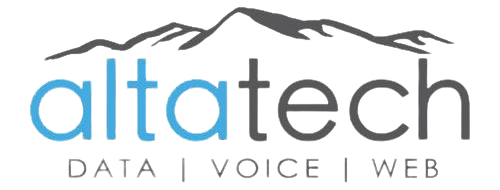Companies now see the value in remote IT management they are key to managing IT systems from anywhere not just the office.
Remote work is becoming common its crucial to keep operations running smoothly and it systems in check. Remote IT solutions help businesses stay agile and flexible this lets them tackle challenges quickly and well.

This guide explores the importance of remote it management in businesses it shows how it management tools can help companies excel and grow.
A modern office environment featuring a diverse group of professionals collaborating over digital devices, with a central screen displaying network connections and cloud icons, surrounded by abstract geometric shapes representing technology and connectivity in a sleek color palette of blues and grays.
The Rise of Remote IT Management in Modern Businesses
Since more companies are switching to remote work arrangements they must find new approaches to IT administration such as remote IT management.
A big factor in making this feasible has been cloud computing. Businesses can now remotely manage their IT assets thanks to it.
A modern office environment showcasing remote IT management trends, featuring diverse professionals collaborating via virtual screens, intricate network connections in the background, digital devices like laptops and tablets, and futuristic elements representing cloud technology and cybersecurity, all infused with a vibrant color palette to signify innovation and efficiency.
Studies indicate a significant increase in the use of remote IT administration by businesses. 70% of businesses upgraded their IT over a two-year period to enable remote work this demonstrates the significance of IT innovation in their goals.
Cloud computing is also a factor in this expansion it provides adaptable remote IT management options.
Modern technology is creating new opportunities in addition to satisfying existing demands. Cloud-based smart tools are enabling firms to remotely manage and secure their IT infrastructure.
Defining Remote IT Management
Remote IT management is a wide range of services that manage an organization IT from afar. It uses advanced tech for IT system administration, IT remote support, remote network management and virtual IT management. The goal is to keep systems running smoothly, improve efficiency and grow with the business.
Remote IT management is different from traditional on-site management. It offers flexibility and quick action It includes tasks like updating systems managing networks, checking security and keeping everything running well.
Virtual IT management also means providing support, solving problems and managing networks to prevent issues.
People like network technicians, system admins and support specialists play key roles. They use advanced tools to watch over the IT of the organization. This approach makes IT better, cuts downtime and saves money. Its great for businesses wanting better IT service and reliability.
Key Components of Remote IT Management Systems
Managing IT infrastructure is complex remote IT Management systems simplify this task, making operations smoother across large networks they are key for businesses wanting to stay efficient and secure from a distance.
The Centralized Dashboard
The heart of good remote IT management is the dashboard software. This tool gives IT managers a clear view of all IT assets, no matter where they are. Dashboards are crucial for monitoring and help in making quick decisions with detailed data.
a single dashboard IT teams can easily track performance, system alerts and manage operations this makes it easier to handle any problems quickly.
Automated Monitoring and Maintenance
For IT teams, being proactive is essential it automation tools in remote monitoring and management (RMM) systems help track and manage IT components well these tools spot potential problems early letting IT experts fix them before they get worse.
Automation also handles regular updates and maintenance tasks this keeps systems running smoothly and reduces downtime.
Security Protocols and Compliance Management
Keeping IT secure in a remote setting is tough but vital. Remote IT management systems ensure all security rules are followed and compliance is met they enforce security policies, do regular checks and manage data protection.
This keeps sensitive business data safe from hackers and cyber threats with changing laws having a system to manage compliance is crucial it helps businesses follow legal rules and avoid fines.
Benefits of Implementing Remote IT Management
Remote it management brings big changes it helps with cost efficiency, scalability, IT support efficiency and business continuity. Companies can save a lot by moving to remote IT this means less money spent on buildings and staff.
Remote IT is great for growing or changing businesses it can easily adjust to new needs without big costs this is unlike old systems that need lots of changes to hardware and people.
Remote IT also makes IT support better it lets teams watch systems closely and fix problems early this keeps systems running smoothly and helps IT teams work faster.
Finally, remote IT makes businesses more resilient it lets teams work from anywhere keeping operations going even when things get tough this is especially important during big disruptions like natural disasters.
Remote IT Management: Challenges and Solutions
Managing it remotely comes with its own set of challenges and solutions. These include network reliability, data protection and adopting new technologies.
Dealing with Connectivity Issues
Having reliable remote connections is key in IT management to keep networks running smoothly companies need strong broadband solutions. Investing in high-bandwidth and low-latency broadband helps daily tasks run without hiccups.
Setting up redundant networks is also crucial this way if one connection fails another can take over this keeps operations running without interruption.
Ensuring Data Security When Outsourcing
As more businesses use third-party IT services data security becomes a top priority its vital to choose providers with strong data protection this ensures sensitive information stays safe.
Looking for providers that follow strict security measures and international standards is wise this adds an extra layer of protection for business data managed remotely.
Overcoming Resistance to New Technologies
Resistance to new tech can slow down adoption a big issue in remote IT management. Change management and training can help overcome this by encouraging a culture of learning teams can see the value in new tech.
This approach reduces fear and makes adopting new tech easier it prepares businesses for future tech advancements in remote IT management.
Remote IT Management Success Stories
Looking at case studies of companies that use remote it implementation shows us its power. These stories share real-life examples and show the numbers behind the success through success metrics.
A big company worldwide used a remote IT system in all its offices this move made their work 40% more efficient it automated simple tasks and put all data in one place this change cut down on IT costs and made tech help faster.
An online shopping site also saw big changes with remote IT they cut system downtime by 50% thanks to their success metrics they also improved security cutting down on problems by 75% this shows how strong remote IT can be.
These case studies show how remote IT implementation can change things. Companies are not just solving problems they are setting new standards for work and safety this proves remote IT management.
Conclusion
The world of remote IT management has changed how companies use technology this guide has covered its rise, key parts, benefits and challenges.
Adopting remote it is key for businesses looking to grow success stories show its a smart move its not just about tech its about being flexible and innovative.
Businesses everywhere should see remote IT as essential Its not just for today its for the future. By embracing remote IT companies can prepare for tomorrow tech needs.

